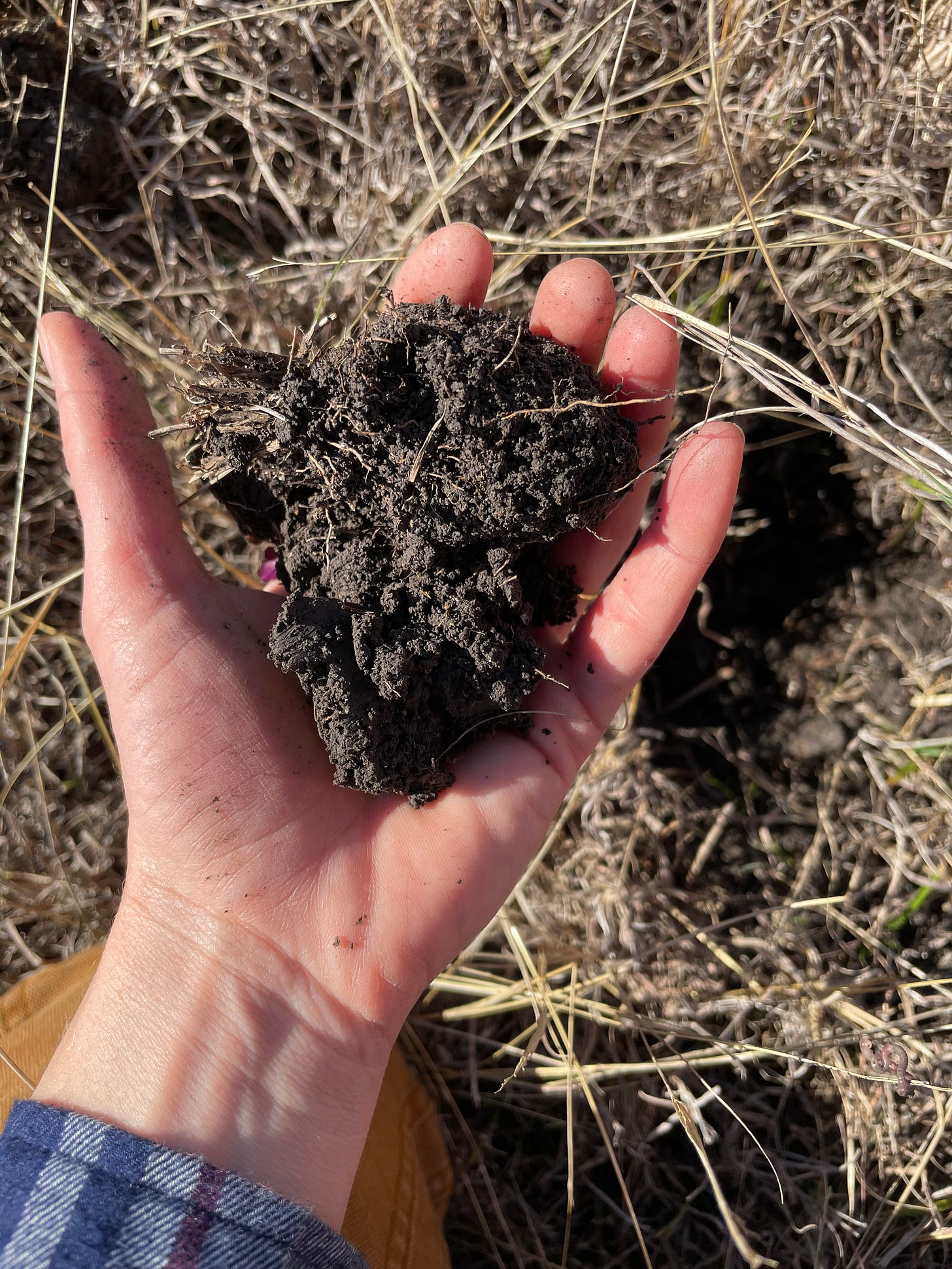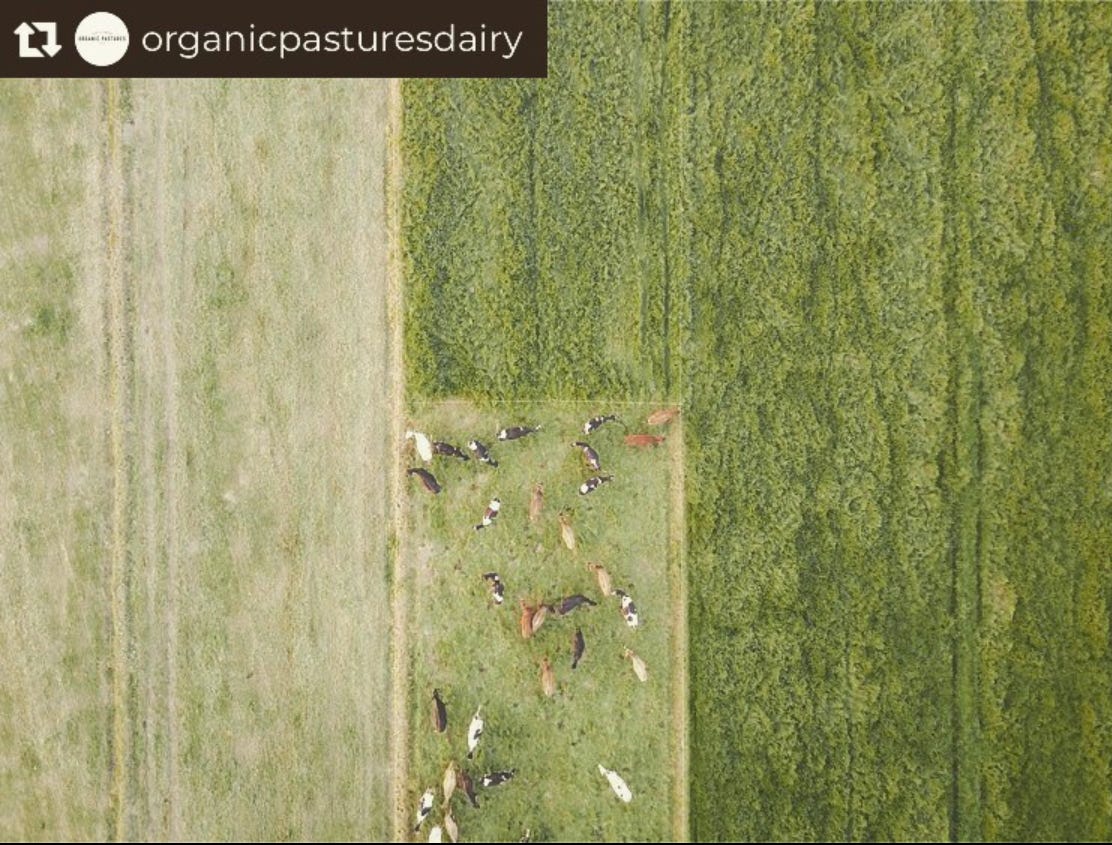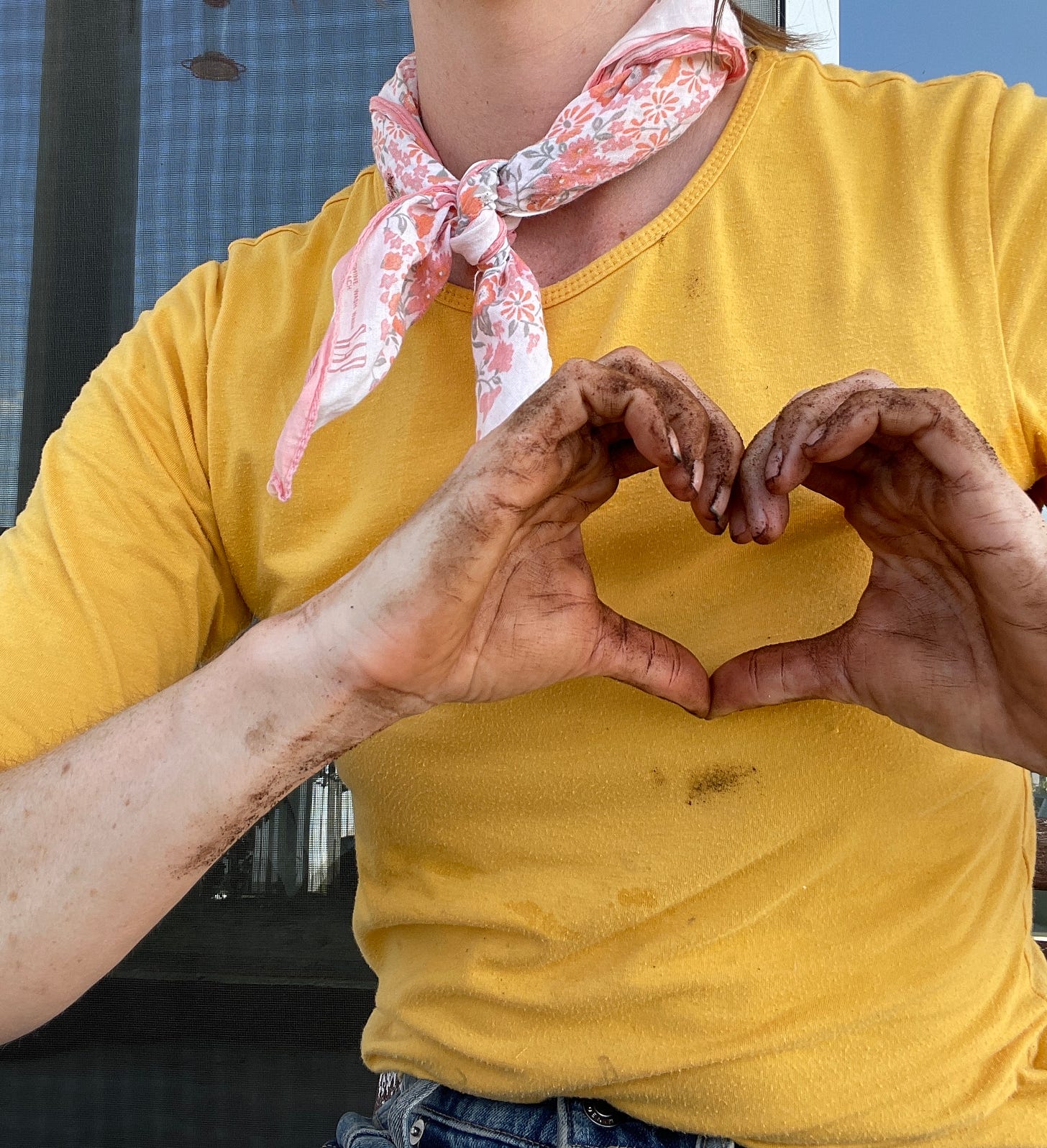Recently I was asked, “why is some of the soil so black here around Austin - doesn’t that mean it’s super fertile?” My answer was, “KINDA!”
There may be an abundance of organic matter contained in the Houston Black Clay soils across Texas in the Blackland Prairie ecoregion (or in a soil near you!), but the organisms responsible for cycling nutrients to native plant species are typically no longer supported in the ecosystem, leaving these plant nutrient reserves largely untapped! 😯
Where did the organisms go? Can we restore natural cycles back to this landscape?
Let’s. Go. ⚡
First, What IS Soil Fertility?
Soil fertility kind of feels like a catch-all term, let’s define it:
The Food and Agriculture Organization (FAO) defines soil fertility as, the ability of a soil to sustain plant growth by providing essential plant nutrients and favorable chemical, physical, and biological characteristics as a habitat for plant growth.
I like this definition as it covers all our bases in terms of soil properties - chemical, biological, and physical (think mineral characteristics and structure).
Today, in the case of these black clays, there is something left to be desired in each of these categories of soil health. However, the redeeming quality and potential lies in the organic matter (OM) content of these soils. Typically the OM is relatively high, especially considering how intensively they’ve been used for agriculture in recent history!

How the Organic Matter Formed
Prairie grasses evolved to have relatively deep root systems to gain access to water during dry, hot summers. They are perennial plants, meaning their roots remain living belowground even in times where the aboveground vegetation is dormant. Such a large and stable root system belowground supported a thriving microbial ecosystem.
Meanwhile, the native grasses aboveground attracted a diversity of animals, be it for grazing, predation, or habitat. Herding animals would munch, stomp, defecate, and constantly move across these landscapes, incorporating significant amounts of organic matter into the soil. As the diversity of plants, insects, and animals lived out their lives, deposited their waste, died and decomposed on this landscape for thousands of years, a large reserve of humus built up in the soil giving the characteristic dark color. The prairies stretching across most of North America were naturally prone to grassland fires, between these fires and the grazing herds, woody plant species were suppressed, leaving the vast sea of grass.

How Cycles Were Disrupted
Like most good things, all the trouble started during colonization, ha 😬. When the Blackland Prairie was colonized by European immigrants in the 1800s the ecoregion was valued for its soil fertility and plowed to raise forage grass species for domesticated animals to graze, as well as crop production. Though their cultivated plants surely grew well in the fertile i.e. chemically, physically, and biologically rich soil at that time, the plant varieties they were raising didn’t share the same characteristics as the native grasses that supported the abundance of the natural ecosystem, nor were the animals grazed quite like the wild herds of bison. Fences were put up (I feel like fences were a cultural thing more so than a practical thing…) and fires were suppressed so as not to disrupt the settlers.
To this day, the vegetation planted across the Blackland Prairie like forage grasses, and uh forage grain? 😣 like sorghum and corn, do not contribute to the humus-producing processes of the native prairies. Additionally, many grasslands are prone to woody thickets due to the disruption of grazing and natural fire cycles.
So, there may be an abundance of organic matter contained in such soil, but the organisms responsible for cycling nutrients to native plant species are no longer supported in the ecosystem, leaving these plant nutrient reserves largely untapped. Ironically, this can lead to the use of synthetic fertilizers on fertile fields! Furthermore, as we clamor to keep the land productive and stave off unwanted species, we may even turn to herbicides and pesticides, all of which, fertilizers included, suppress our microbial helpers in the rootzone.
Cultivated Crops vs Native Vegetation
Microorganisms are responsible for metabolizing nutrients found in minerals and organic matter and making them available to plants. When you consider the differences between how the prairie functioned and how a typical farm functions, it’s clear to see how the native soil biology is no longer being supported, and therefore nutrient cycling is limited. See below for some examples:
TO BE CLEAR, I’m not saying we shouldn’t raise crops or domesticated animals on these lands (though I’m not a huge fan of how many acres are dedicated to grain-based animal feed…). Rather, I’m pointing out that we would benefit by managing our crops and animals with methods that respect the functions of nutrient cycling, soil structure formation, and biodiversity. AND… we should also regenerate land for native landscape conservation - even though we may not consume food from a conservation site, the functions of the ecosystem directly impact our health and well-being (water filtration, drought tolerance, carbon sequestration, reduced air pollution, and more...)
The Take-Home Message
In order for this soil to have the amount of organic matter it does today, means it has had a long history of extremely active and biodiverse organisms belowground and above. However, this soil is no longer home to such diversity. It still has abundant reserves of organic matter, but it cannot currently support the types of plant species native to it. Moreover, to some extent, the soil may also struggle to meet the needs of various other desired vegetation, including cultivated crops, due to the disruption that is inherent to conventional agriculture methods.
The Thought-Experiment
How can we restore some, if not all of the factors that we know contribute to a thriving native prairie ecosystem?
👆 This is our job as stewards, as conscious beings who are capable of acknowledging our impact on the land and how it in turn impacts our abundance and health.
To restore land that’s had such a long history of misuse is no easy task, but there are steps worth taking and a legacy worth leaving if you find yourself with such an opportunity. When you consider the thousands of years it took for these ecosystems to naturally form, it’s really quite remarkable that over the course of a 5, 10, 20-year timespan that you initiate, meaningful change is possible.
What Stewardship Looks Like
Some ranchers are finding strategic ways to move their livestock across the land to mimic that of native herding animals, which helps to incorporate new sources of waste into the soil, supporting beneficial microbial activity which in turn provides them a landscape and business that is more resilient and abundant. This is a great example of how we can consider prairie ecosystem dynamics and find ways to replicate what nature was doing to not only maintain that fertility, but to keep it cycling – back to the plants, to the animals, to us, and again to the soil.

Transitioning vegetation requires a lot of thoughtful planning and observation. A common instinct is to eradicate the undesired vegetation in some way, be it mechanically with tillage, chemically with herbicide, or via prescribed burn. As you can imagine, each of these is extremely disruptive, and my instinct is to not treat a disrupted landscape with more disruption, especially if you have encouraging observations of the soil system in its present state (worms, good OM%, some microbial diversity, etc.) If it’s all bad news, well then maybe one last disruption is acceptable.
You may be wondering, “what about those natural fires?” – fires are most useful as a management tool in a mature and stable landscape that has the resilience to bounce back after that disruption. Unfortunately, burning an average plot of land would likely burn off a lot of useful carbon in and on the soil and potentially set back the biology even further. Save prescribed burns for when you’ve reached a regenerative state!
Remember, aboveground and belowground ecosystems depend on one another. When an aboveground ecosystem is affected, so too is the biology belowground AND VICE VERSA:
When we change biology belowground, we can change what’s occurring aboveground. This is the foundation of regenerative methods used in land restoration.
Thank you so much for reading. If you found this write-up interesting, please share with your friends and comment below with one new thing you pondered while reading this!
PS:
I’m currently collecting Q’s for a Q&A post coming soon. Reply or Email me at andie@rhizos.science with a question big or small related to soil health, soil biology, compost, or restoration and it may be discussed in an upcoming newsletter!
Much Love,
Andie
References:
Welch, Charles D., Gray, Garl, Thomas, Grant W., Anderson, Warren B., Mclean, Gordon (1968). Fact Sheet. Crop Fertilization on Texas Blackland and Grand Prairie Soils. Texas &University. Agricultural Extension Service. https://oaktrust.library.tamu.edu/bitstream/handle/1969.1/164773/743/Leaf0743.PDF?sequence=4&isAllowed=y
FAO.org. Soil Fertility | Global Soil Partnership | Food and Agriculture Organization of the United Nations https://www.fao.org/global-soil-partnership/areas-of-work/soil-fertility/en/
Soil Science Society of America. Houston Black - Texas State Soil. https://www.soils4teachers.org/files/s4t/k12outreach/tx-state-soil-booklet.pdf
Potter, Kennth N. (2010) Building Soil Carbon Content of Texas Vertisols. 19th World Congress of Soil Science, Soil Solutions for a Changing World. USDA-ARS Temple, TX. https://www.iuss.org/19th%20WCSS/Symposium/pdf/0222.pdf
Non-Natives vs Native Image Source: https://www.canr.msu.edu/news/protecting_michigans_waters_what_can_you_do







Wonderful, thanks! I've also added numerous layers of leaf mold and wood chips over the past several years in an attempt to restore some of the biomatter stripped away. Seems to be helping.
Thanks for this. For suburban gardeners looking to resuscitate their small ecosystem, are good stewardship practices (native plantings, no chemicals, leaving leaf litter, etc) enough to restore healthy soil, including all the microorganisms you teach about?